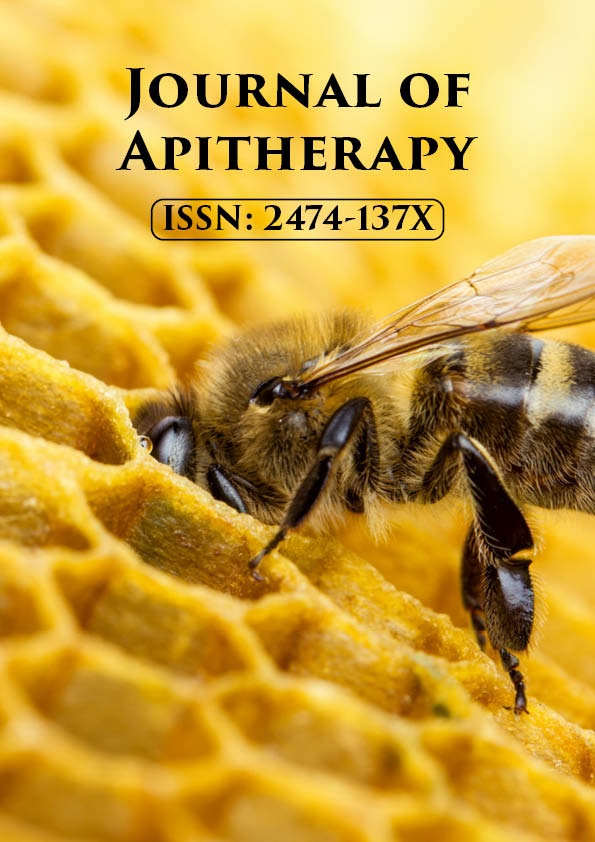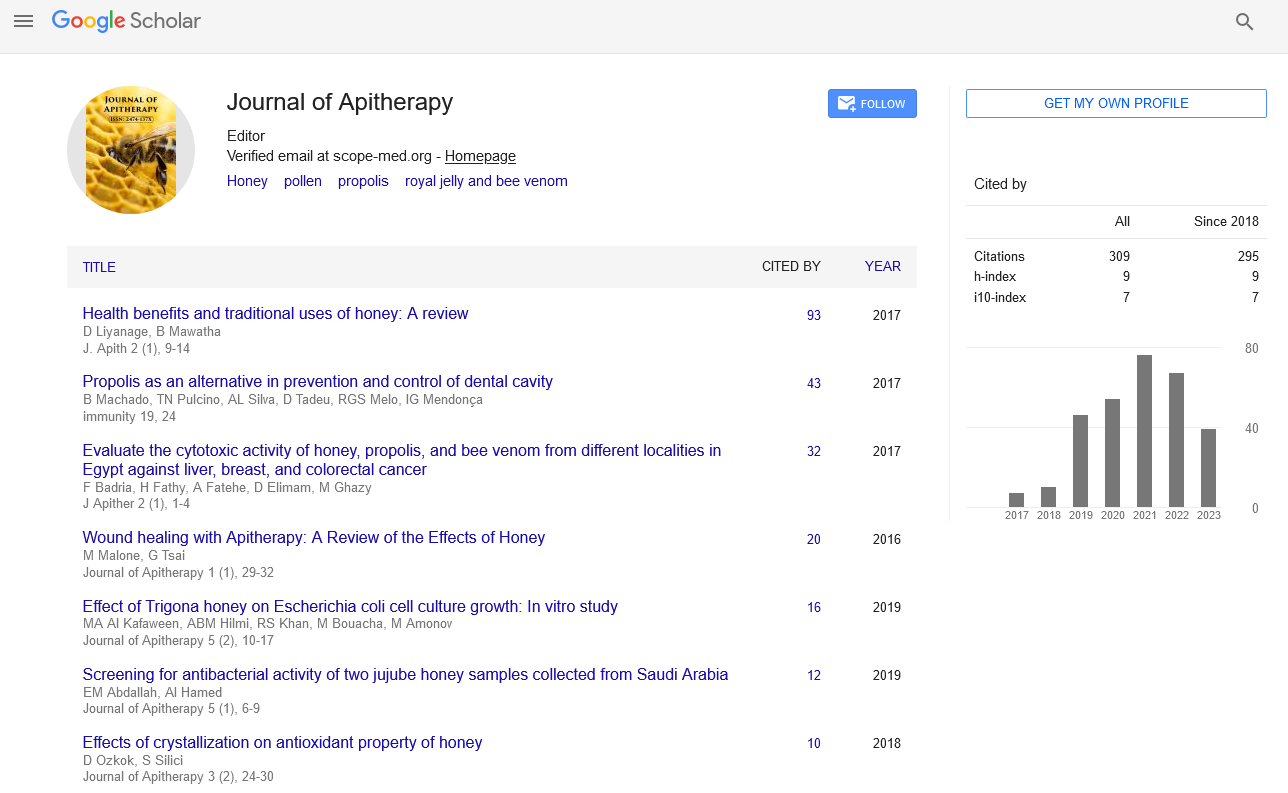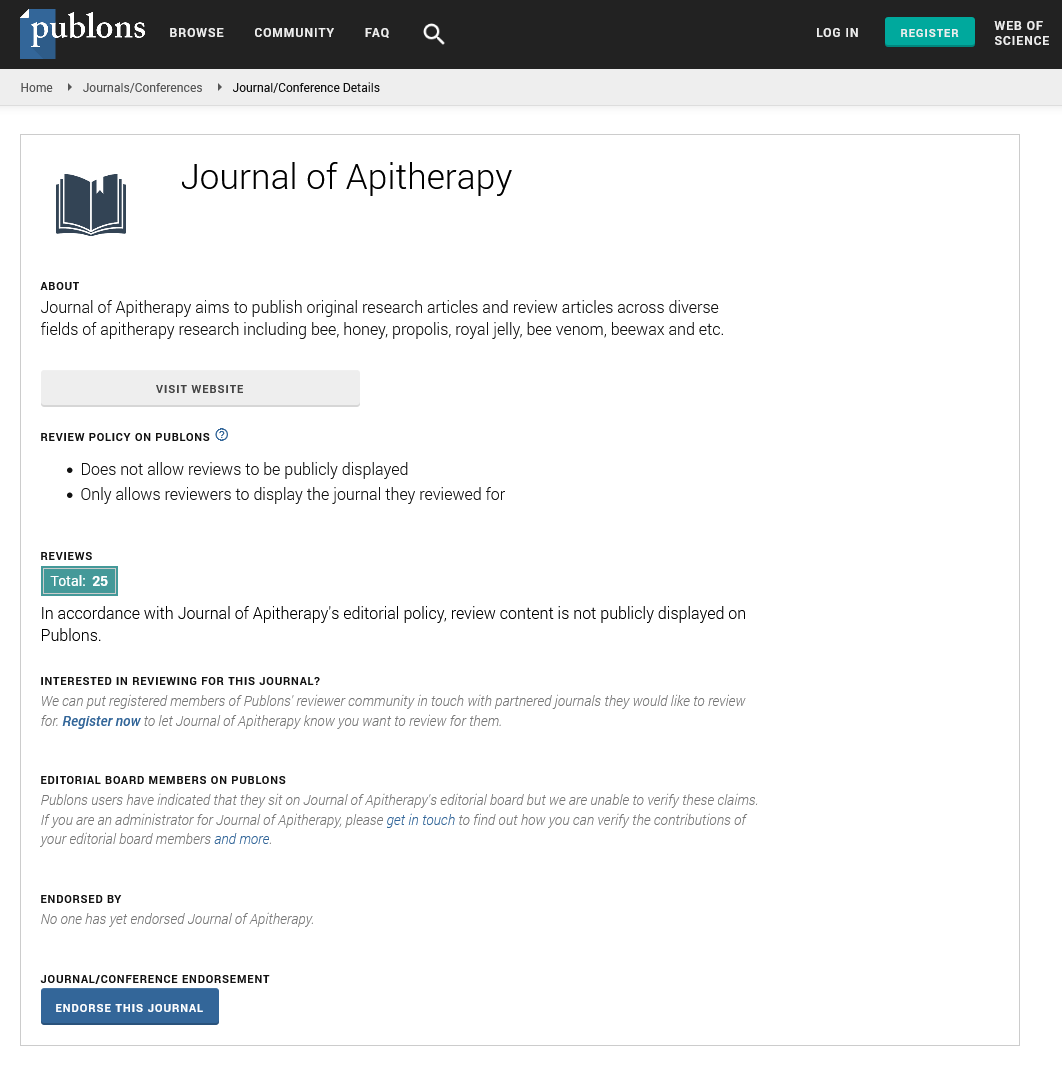Perspective - Journal of Apitherapy (2023)
Venom Immunotherapy: Harnessing Nature's Defense against Insect Stings
Mahmud Khan*Mahmud Khan, Department of Pharmaceutical Sciences, University of Science and Technology, Bangladesh, Email: mahmud@gmail.com
Received: 09-Oct-2023, Manuscript No. JAPITHERAPY-23-123355; Editor assigned: 11-Oct-2023, Pre QC No. JAPITHERAPY-23-123355 (PQ); Reviewed: 25-Oct-2023, QC No. JAPITHERAPY-23-123355; Revised: 02-Nov-2023, Manuscript No. JAPITHERAPY-23-123355 (R); Published: 09-Nov-2023
Description
In the intricate dance between humans and the environment, encounters with insects are often unavoidable. For some, however, these seemingly benign interactions can be life-threatening due to severe allergic reactions triggered by insect venoms. Venom Immunotherapy (VIT), a ground-breaking medical intervention, has emerged as a lifeline for individuals with venom allergies. This therapeutic approach not only mitigates the risk of anaphylaxis but also showcases the remarkable capacity of the human immune system to adapt and defend against potentially deadly stings.
Venom immunotherapy
Venom immunotherapy is a specialized form of allergy treatment designed to desensitize individuals with venom allergies. The process involves administering gradually increasing doses of insect venom extracts to the allergic individual, with the goal of retraining the immune system to tolerate the venom without triggering an allergic response.
The treatment typically begins with tiny doses of venom, usually administered through subcutaneous injections. Over time, the dosage increases until the patient reaches a maintenance dose, at which point they receive regular injections to sustain desensitization. The process can take several weeks to months, and the duration of treatment may vary based on individual response and the type of venom involved.
Key components of venom immunotherapy
Allergen identification: Before initiating venom immunotherapy, it is crucial to identify the specific insect venom to which the individual is allergic. This is typically determined through skin tests or blood tests that measure the presence of specific antibodies (IGE) to insect venom proteins.
Build-up phase: The build-up phase involves administering gradually increasing doses of the allergen to the patient. This phase occurs in a controlled medical setting, such as an allergist's office, to monitor for any adverse reactions.
Maintenance phase: Once the patient reaches a therapeutic dose, they enter the maintenance phase, where they receive regular injections at a stable dosage. The goal is to sustain desensitization and reduce the risk of severe allergic reactions to future insect stings.
Long-term management: Venom immunotherapy is considered a long-term solution for managing venom allergies. Regular follow-up appointments with an allergist are essential to assess the patient's response and adjust the treatment plan as needed.
Effectiveness and success rates
Venom immunotherapy has demonstrated high success rates in preventing severe allergic reactions to insect stings. For bee and wasp venom allergies, the treatment has shown effectiveness in preventing anaphylaxis in over 95% of cases. The success rate is slightly lower for ant venom allergies but remains a valuable option for reducing the risk of systemic reactions.
The effectiveness of venom immunotherapy extends beyond merely preventing severe reactions. Studies have shown that individuals who undergo VIT experience an improvement in their quality of life, reduced anxiety related to insect stings, and an increased sense of confidence in outdoor activities.
Considerations and safety measures
While venom immunotherapy is generally safe and well-tolerated, there are considerations and safety measures to keep in mind:
Adverse reactions: During the build-up phase, patients may experience local reactions at the injection site or mild systemic reactions. These reactions are typically transient and managed by adjusting the dosage.
Patient selection: Venom immunotherapy is recommended for individuals who have a history of severe allergic reactions to insect stings and positive tests for specific venom allergies. It may not be suitable for everyone, and the decision to pursue VIT is made on a case-by-case basis.
Pregnancy and children: The safety of venom immunotherapy during pregnancy is an area of ongoing research, and decisions regarding its use are made on an individual basis. While VIT is generally safe for children, careful consideration is given to factors such as the child's age, the severity of the allergy, and the potential benefits of treatment.
Concomitant medications: Some medications, such as beta-blockers, can affect the response to venom immunotherapy. It is essential for individuals undergoing VIT to inform their healthcare providers about any medications they are taking.
Venom immunotherapy stands as a remarkable testament to the adaptability of the human immune system and its potential to be harnessed for therapeutic purposes. By systematically exposing the body to increasing doses of venom, this treatment empowers individuals with venom allergies to lead lives that are less constrained by the fear of potentially life-threatening insect stings.
As research continues to unveil new insights and refine the approach to venom immunotherapy, the hope is to make this life-changing intervention more widely accessible and tailored to the unique needs of each patient. Ultimately, venom immunotherapy bridges the gap between the fear of anaphylaxis and the freedom to enjoy outdoor activities without the constant worry of a venomous encounter, offering a path to a safer and more liberated life for those with venom allergies.







